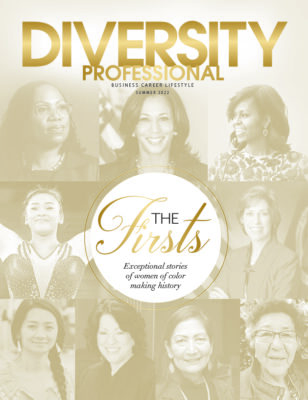Make The Move To Impact Sourcing
The need for a 21st century overhaul of supplier diversity.
The terminology has changed with the removal of the word “Diversity” and its replacement with “Inclusion.” Supplier Inclusion is now the title for what was formerly Supplier Diversity.
“Thank you for registering in our supplier diversity portal. We have forwarded your information to the appropriate department(s). If a need arises for your product or service, we will contact you.”
This is the 20th century approach to supplier diversity—profile management of small businesses certified as owned, operated and controlled by a minority, woman, LGBTQIA, and/or veteran. It is reactive, not active.
The new year is bringing with it the swift winds of change, not the least of which focus directly upon job creation and the economy. These are admirable topics, but what of supplier diversity?
Diverse small businesses have been key drivers in U.S. economic growth for the past 10 years by creating jobs and bringing wealth to their communities. Also in the last 10 years, a large percentage of Fortune 1000 companies have created departments and systems to build and manage a diverse supply chain for their companies, as they’ve come to recognize America’s demographic shift and the strong business case to do so.
Fast forward to fall 2016. The Wall Street Journal published, “HP Demands Ad Agencies Diversify Their Workforces.” Then, Kenton Clarke, CEO at DiversityBusiness.com, published “Supplier Inclusion: The Shift is On,” where he postulated, “Has a 60s approach to inclusion within a supplier base finally met its long-overdue end? Since 20th century terms, systems and processes have not been updated in decades, I would agree it has.”
The terminology has changed with the removal of the word “Diversity” and its replacement with “Inclusion.” Supplier Inclusion is now the title for what was formerly Supplier Diversity. It’s a beginning, but there is much more to be done. Pandora, the music streaming service, has banned the term “culture fit” and replaced it with “culture add,” which means shaping the culture rather than fitting into it.
Most companies with supplier inclusion programs cite the following as the business case for working toward a more diverse supplier base: Help the company innovate; help business partners grow; help communities thrive. The challenge is, and has been, that standard “supplier diversity” programs do just the opposite. Those programs eventually lead to complacency, lack of innovation and under performance. The business case is still solid; it’s the processes that need work.
Today, supplier inclusion managers attempt to either match diverse small businesses to a list of needs they receive from procurement once a quarter, or they qualify the companies they meet at conferences using three key indicators—certification of ownership, capacity and capabilities.
Supplier inclusion professionals have a unique opportunity to move toward a more holistic approach to a supplier inclusion program by shaping the mix of a corporate supplier base rather than fitting companies into it; by building an integrated strategy and elevating processes around supplier inclusion. In short, curating their company’s supplier base. Sure, the three indicators previously mentioned are important, but the inclusive nature of the supplier’s workforce should be added to the top of the list. The face of every company’s workforce should be like the ownership—inclusive.









